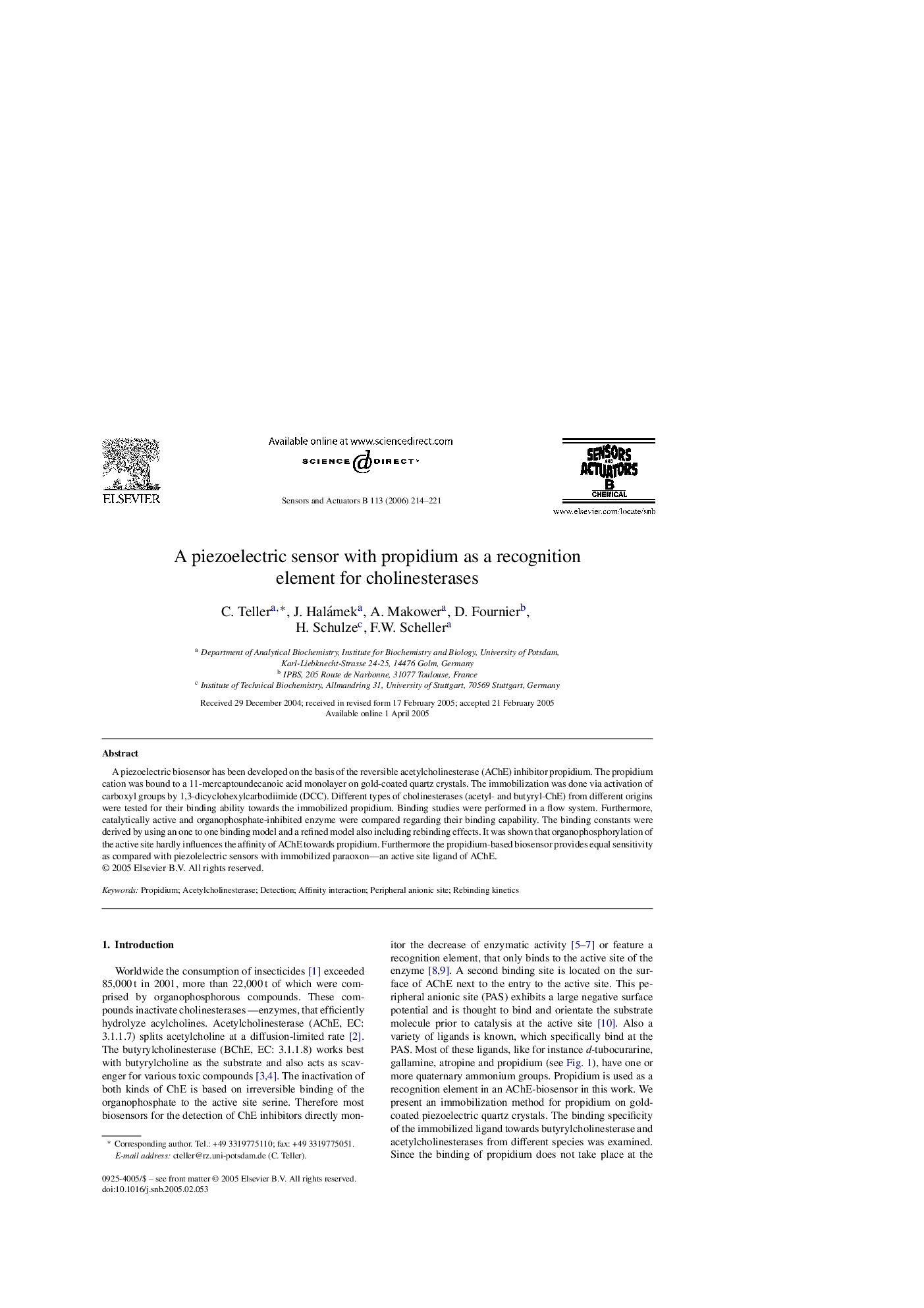| Article ID | Journal | Published Year | Pages | File Type |
|---|---|---|---|---|
| 745390 | Sensors and Actuators B: Chemical | 2006 | 8 Pages |
Abstract
A piezoelectric biosensor has been developed on the basis of the reversible acetylcholinesterase (AChE) inhibitor propidium. The propidium cation was bound to a 11-mercaptoundecanoic acid monolayer on gold-coated quartz crystals. The immobilization was done via activation of carboxyl groups by 1,3-dicyclohexylcarbodiimide (DCC). Different types of cholinesterases (acetyl- and butyryl-ChE) from different origins were tested for their binding ability towards the immobilized propidium. Binding studies were performed in a flow system. Furthermore, catalytically active and organophosphate-inhibited enzyme were compared regarding their binding capability. The binding constants were derived by using an one to one binding model and a refined model also including rebinding effects. It was shown that organophosphorylation of the active site hardly influences the affinity of AChE towards propidium. Furthermore the propidium-based biosensor provides equal sensitivity as compared with piezolelectric sensors with immobilized paraoxon-an active site ligands of AChE.
Related Topics
Physical Sciences and Engineering
Chemistry
Analytical Chemistry
Authors
C. Teller, J. Halámek, A. Makower, D. Fournier, H. Schulze, F.W. Scheller,
